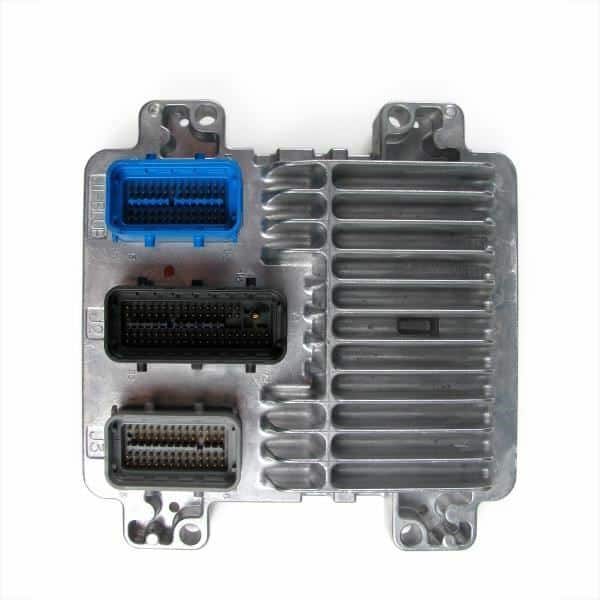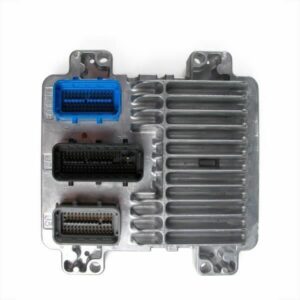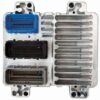Restore Peak Performance and Reliability to Your GM SUV
If you’re dealing with frustrating, hard-to-diagnose issues on your 2006 SAAB 9-7X or a related GM vehicle, the Powertrain Control Module (PCM) is often the culprit. As a technician with over two decades of experience, I’ve seen firsthand how a failing engine computer can cause a cascade of problems—from a simple check engine light to a vehicle that refuses to start. This isn’t just a component; it’s the brain of your engine, and when it falters, everything from fuel delivery to spark timing and transmission shifting can be compromised.
This replacement Powertrain Control Module is the definitive solution. We take the guesswork and hassle out of the repair by pre-programming the unit specifically for your vehicle. Simply provide us with your Vehicle Identification Number (VIN) during checkout, and our experts will flash the module with the latest, most stable GM factory software. This ensures perfect communication with all other modules in your vehicle and restores the original performance and efficiency you expect. A faulty 2006 SAAB 9-7X PCM can be a major headache, but this direct-fit, pre-programmed solution makes the fix straightforward and dependable.
From the Diagnostic Bay: The Intermittent No-Start Trailblazer
I remember a 2006 Chevy Trailblazer that came into the shop with a ghost of a problem. The owner said it would randomly fail to start, but only after it was warm. No check engine light, no consistent codes. We checked fuel pressure, spark, and battery—all perfect. After hours of diagnostics, we hooked up a scope to the PCM’s power and ground circuits. We discovered that when the engine bay got hot, the PCM would develop an internal short, killing the 5-volt reference circuit for the sensors. The vehicle was essentially blind. Swapping in a pre-programmed PCM like this one solved the issue in under 30 minutes. It’s a classic failure mode for these units, and this part is the cure.
Is Your SUV Showing These Signs of PCM Failure?
A failing engine computer can manifest in numerous ways. If you’re experiencing any of the following, it’s a strong indicator that your PCM may need replacement. Look out for:
- ✔ Check Engine Light is illuminated with codes like P0601, P0602, P0606, or U0100.
- ✔ The engine cranks but refuses to start.
- ✔ Unexplained drops in fuel economy.
- ✔ Harsh or erratic automatic transmission shifting.
- ✔ The vehicle stalls intermittently, especially when warm.
- ✔ Failure to pass state emissions testing.
- ✔ Communication errors with diagnostic scan tools.
A Straightforward Guide to Installation
Replacing your 2006 SAAB 9-7X PCM is a job most DIY mechanics can handle. Because this unit arrives pre-programmed, you avoid a costly trip to the dealership. Follow these general steps for a successful installation:
- Safety First: Always disconnect the negative terminal from your vehicle’s battery before beginning any electrical work.
- Locate the PCM: On most of these vehicles (like the SAAB 9-7X, Trailblazer, and Envoy), the PCM is located in the engine bay, typically on the driver’s side (LH engine). On others (like the Colorado and H3), it’s on the passenger’s side firewall (RH firewall).
- Disconnect the Connectors: Carefully release the locking tabs on the electrical harness connectors and pull them straight out from the module. Avoid pulling on the wires themselves.
- Remove the Old Module: Unbolt the old PCM from its mounting bracket. Keep the hardware, as you may need to reuse it.
- Install the New Module: Mount your new, pre-programmed PCM onto the bracket and secure it.
- Reconnect Everything: Firmly press the electrical connectors into the new module until they click into place. Reconnect your vehicle’s negative battery terminal.
- Final Step: In some cases, a security relearn procedure may be required, which can typically be done without special tools by cycling the key. Your vehicle’s service manual will have the specific steps if needed.
Verified Vehicle Compatibility List
This module is a direct replacement for a wide range of GM trucks and SUVs. It is guaranteed to fit and function correctly in the following vehicles, replacing numerous original part numbers including 12569773, 12597521, and 19209820. Please verify your vehicle and options below:
- ✔ Buick Rainier: 2006 (4.2L)
- ✔ Chevrolet Colorado: 2004-2006
- ✔ Chevrolet Trailblazer & Trailblazer EXT: 2006 (4.2L)
- ✔ GMC Canyon: 2004-2006
- ✔ GMC Envoy & Envoy XL: 2006 (4.2L)
- ✔ Hummer H3: 2006
- ✔ Isuzu Ascender: 2006 (4.2L)
- ✔ Isuzu i-280: 2006
- ✔ Isuzu i-350: 2006
- ✔ Saab 9-7X: 2006 (6 Cylinder)
Frequently Asked Questions
What is a VIN and why do you need it?
The VIN (Vehicle Identification Number) is a unique 17-digit code for your specific vehicle. We use it to load the exact factory software and calibrations for your car’s engine, transmission, and options, ensuring a perfect match and seamless operation.
Will I need to do any additional programming after installation?
No! This module comes fully programmed to your VIN. In most cases, it is a plug-and-play installation. Some vehicles may require a simple key-cycle security relearn, which does not require any special tools.
What’s the difference between a PCM, ECM, and ECU?
These terms are often used interchangeably. PCM (Powertrain Control Module) is most accurate for these GM vehicles as it controls both the engine and transmission. ECM (Engine Control Module) and ECU (Electronic Control Unit) are more general terms for the same component.
Is this a reliable, long-term fix?
Absolutely. This module is a high-quality replacement part. By programming it with the latest GM software updates, we often resolve underlying drivability issues that may have existed even with the original factory programming, providing a stable and lasting repair.
How can I be sure this fits my vehicle?
You can match one of the part numbers listed in the compatibility section to your old unit, or you can confirm your vehicle is on our fitment list. Providing your VIN for programming is the final check that guarantees you receive the correct, compatible module.



